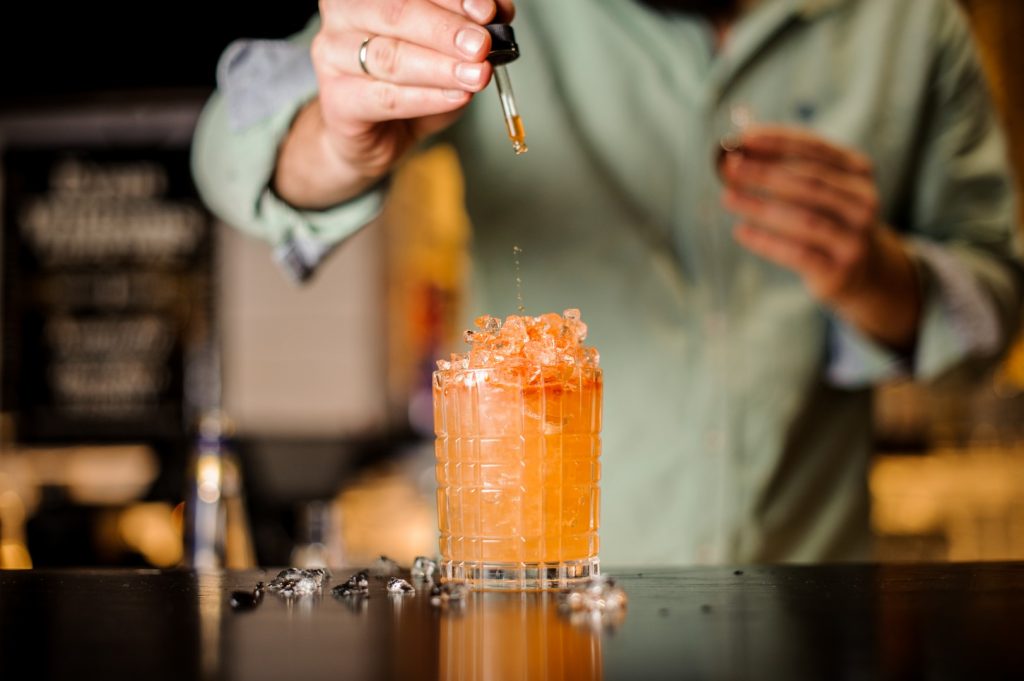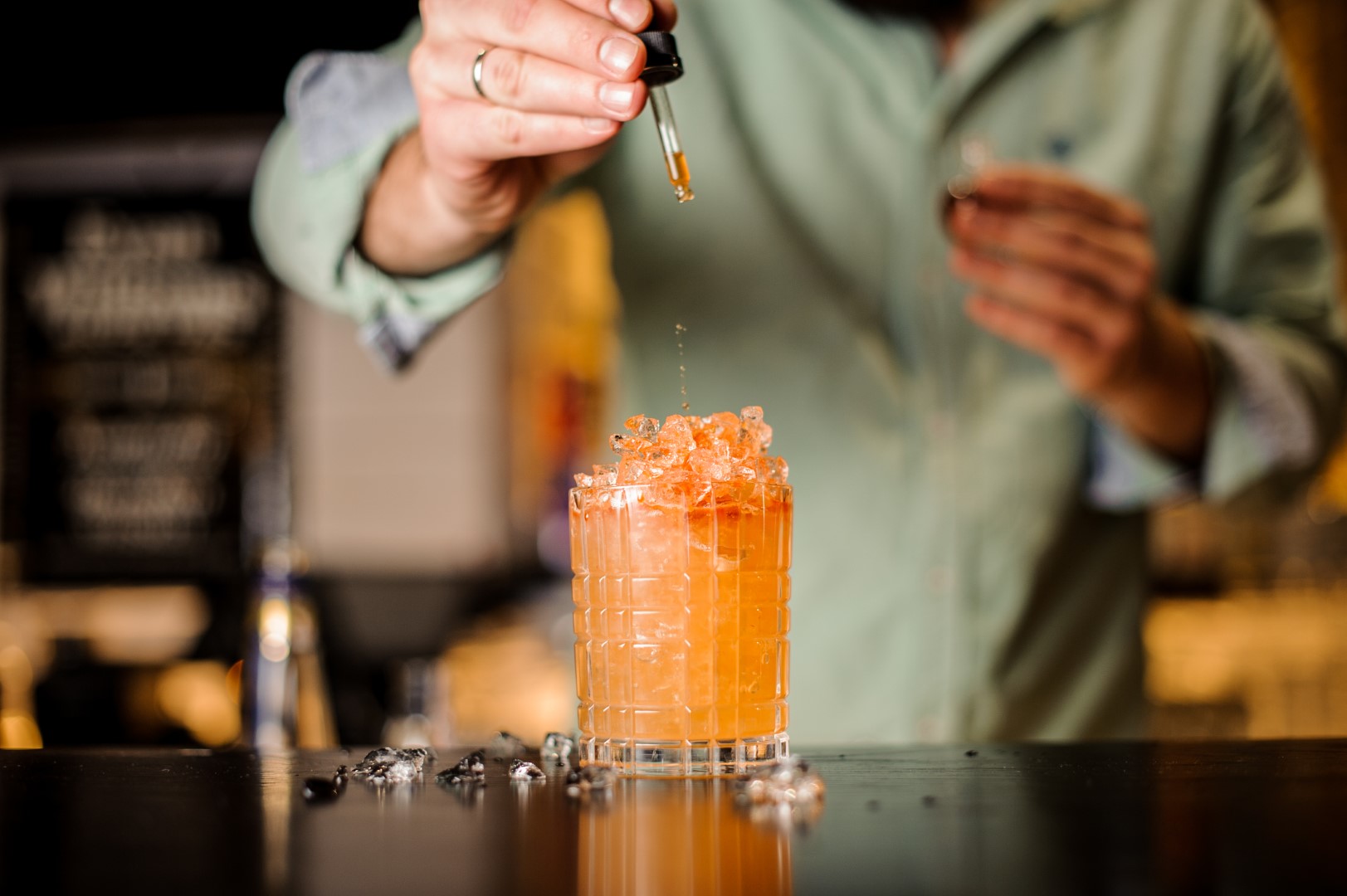
Embracing the convoluted world of cocktail bitters
By Jacey Gibb, Distribution Manager
I long ago accepted the strangeness of cocktail bitters—how commonly they’re used, and yet how little people actually know about them. I myself owned two bottles of cocktail bitters before knowing what they were, but those iconic-shaped bottles are a cornerstone to many delicious cocktails.
First off, bitters are highly concentrated extracts from various fruits, flowers, roots, herbs, or any combination of them. Bitters are strongly flavoured, so most recipes will only call for a few “dashes” or drops. Some bottles even come with an eyedropper for exact precision. Even with just a few drops, bitters can shape the taste of a cocktail.
Bitters have been having a moment these last few years, so the market is overflowing with flavours to choose from. Cherry, apple, turmeric, lavender, ginger, maple, apricot, pear—if it’s a fruit, spice, or herb, then there’s a bitters version of it. Most kitchen-centric stores will have a shelf brimming with various types of bitters, but relax: Most cocktail recipes call for the same kind, known as aromatic bitters.
While it might be tempting to load up on bitters, there are a few things to keep in mind. For one, a bottle of bitters lasts a long time. As in, I’ve never successfully finished a bottle of them. Bitters come in relatively small containers, but since you’ll never use more than a few drops at a time, they’ll be around for years. On a related note, the cocktail community doesn’t appear to have a consensus on whether bitters ever expire. Some websites suggest bitters have a shelf life of five years, but I’ve had some aromatic bitters for almost a decade and my Old Fashioneds still slay, so I don’t know what to tell you.
Another aspect to consider when assembling your arsenal of cocktail bitters is space. Space is a finite resource when living in the Lower Mainland, and if you’re fortunate enough to have a dedicated area for your home bar, it’s likely already full of booze, drinkware, and other cocktail accessories. Cruising the bitters section can feel like being a kid in a concentrated extracts store, but limit yourself to just a few—I’m talking two, maybe three if you’re counting the aromatic bitters. This will prevent your shelves from being overrun with niche bitters that only work in specific cocktails.
The final reason to limit your bitters inventory is simply cost. Bitters ain’t cheap, usually running north of $15 for a small 200-mL bottle, and even though they’ll last forever, there are more important things to burn your money on when it comes to setting up a home bar.
Now that you know more about the mysterious cocktail bitters, it’s time to actually use them. Some well-known cocktails that call for bitters are Manhattans, Old Fashioneds, or Vodka Sours, but bitters can also be used to punch up any original creation. Pick your favourite liquor-and-base combo and see how adding a few dashes of bitters can change the flavours. Just remember to start with only a few drops; you can always add more, but you can’t add less. You can even cut out the middleman and mix a liquor-and-bitters-only beverage. If it tastes good, then there’s truly no wrong way to use bitters.
Give cocktail bitters the credit they deserve. They’re a fun, easy, and effective way to drastically shape the flavour of any cocktail, and it’s about time the world knew about it.

